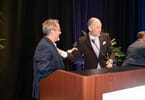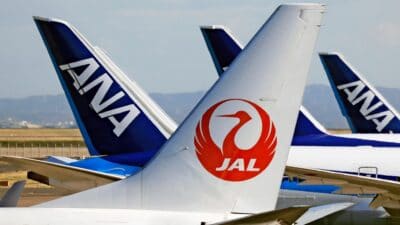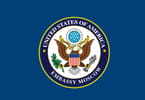With so many stories in the news these days about the lack of customer service for airline passengers, specifically from flight attendants, I wondered what really does a person have to do and learn to become a flight attendant? I always believed that flight attendants or cabin crew are primarily employed by airlines to ensure the safety and comfort of passengers aboard commercial flights.
According to thetravelacademy.com, what it takes to be successful at The Travel Academy’s flight attendant school is professionalism, safety consciousness, adaptability, and flexibility to lifestyle change. Also, a person should have customer service skills, assertiveness, energy, the ability to multitask, and the ability to connect with people. Seems reasonable, although today’s headlines would question how some of these graduates progressed through certain categories listed.
When checking Flightattendantcareer.com, candidates must first be conditionally selected for an interview, and then must successfully pass a safety and security sensitive training program with the airline of choice. Potential flight attendants learn and demonstrate proficiency in the skills to save lives, maintain a safe and comfortable passenger environment, and also provide outstanding customer service. So, customer service IS a requirement, at least according to this learning institution.
However, when it comes to service versus safety training, Flightattendantsacademy.com admits that most airlines offer very little in terms of customer service training during the training course. Approximately 95 percent of the training curriculum is related to cabin safety. Course content includes evacuation drills, operation of emergency equipment, safety demonstrations, fire-fighting, and aviation security, just to name a few.

This academy says that since most airlines hire candidates for their people skills, it will be up to an applicant’s peers to train the new flight attendant on board. Now we are getting to the heart of the matter.
The website goes on to say that flight attendant training is expensive for the company hosting the training, and the current trend among airlines is to fulfill all of the regulatory training requirements and send flight attendants up in the air as soon as they are fulfilled. It is expected that customer service skills will be learned on the job. So, unless you are in a line of previous attendants who have superior customer service skills, expectations on what level of customer service will be achieved is questionable at best. It could be a sad case of monkey see, monkey do the wrong thing.
Once a flight attendant is in uniform, s/he is the airline’s brand ambassador. The airline should not want to risk their brand with nasty, unreliable, or politically incorrect employees. Right?
According to United.com, “If you have a heart for customer service, love interacting with more than 1,000 people every day, are polished enough to wear the same uniform style every day, and jet lag doesn’t bother you, consider applying to start a career as a United flight attendant.”
United’s website states that training not only tests customer service skills, but also if one can successfully learn and perform all safety procedures and work well with others. The training lasts six weeks and includes learning operating and safety procedures for seven or more aircraft.
Ask Virgin America what qualities it looks for in staff, and the answer is: “One who is creative, compassionate, patient, visionary, spontaneous, articulate, a good listener, ambitious, fun, humble, brave, sympathetic, cool under pressure, dedicated, curious, passionate, energetic, inspiring, and trustworthy.” That’s quite a formidable and lofty list, but, yes, I like it.
Specifically for flight attendants, which the airline calls “In-Flight Team Members,” the airlines says that “as the face of Virgin America Airlines, you’ll need to be friendly, enthusiastic, and dedicated to ensuring that guest comfort and company safety is paramount on each flight. You [will] need to know your job like the back of your hand which includes safety procedures, service duties, and the aviation world in general.”
The airline asks potential candidates, “Are you Virgin enough? You will also need to sport a positive approachable personality and be the consummate team player to as they say, ‘make us loveable both inside and out.’” Almost sounds like a dream, doesn’t it?
Ask John Q. Public, and the answer to the question of what the primary role of a flight attendant is, and the answer will be to provide excellent customer service. Most people think of… or want to believe… that flight attendants are like caregivers, and are consummate customer service professionals, as well as safety providers.
Airline passengers look to flight attendants to ensure that they have a safe and calm passage while on a plane. In passengers’ minds, flight attendants are working hard to make sure everyone is comfortable (while constantly wearing a friendly smile), and they see attendants’ responsibilities as greeting passengers as they board the plane, and thanking them as they exit; helping passengers get to their seats; and assisting with stowing luggage in the overhead bins.
Passengers also depend on flight attendants to be the calm voice of reason in the event of an emergency and to administer first aid if necessary. They are, after all, the one demonstrating the airline’s safety procedures at the beginning of a flight.
And just so it isn’t all on the shoulders of flight attendants, cabin crew should also be able to have the expectation that passengers will be polite and courteous as the staff facilitates beverage and food services, answers questions, and calms those who are anxious or upset. It’s a two-way road, after all. Hopefully, a safe and enjoyable road trip in the sky.
WHAT TO TAKE AWAY FROM THIS ARTICLE:
- The website goes on to say that flight attendant training is expensive for the company hosting the training, and the current trend among airlines is to fulfill all of the regulatory training requirements and send flight attendants up in the air as soon as they are fulfilled.
- With so many stories in the news these days about the lack of customer service for airline passengers, specifically from flight attendants, I wondered what really does a person have to do and learn to become a flight attendant.
- Specifically for flight attendants, which the airline calls “In-Flight Team Members,” the airlines says that “as the face of Virgin America Airlines, you'll need to be friendly, enthusiastic, and dedicated to ensuring that guest comfort and company safety is paramount on each flight.























